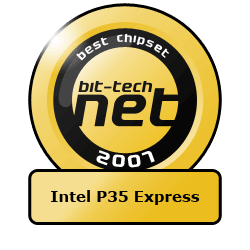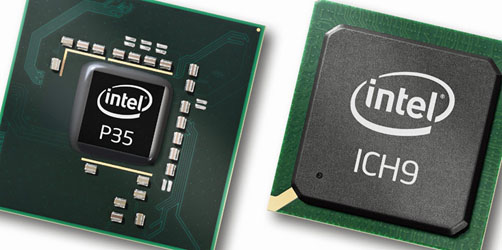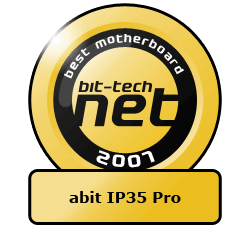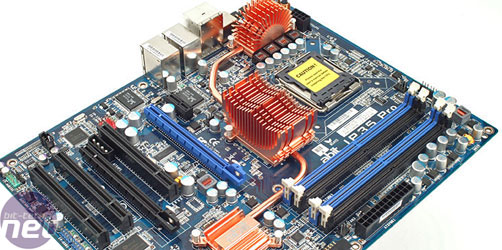The bit-tech Hardware Awards 2007
December 19, 2007 | 08:58

Best Chipset: Intel P35 Express
Notable Mentions: AMD 690GWithout doubt the Intel P35 chipset has been a surprise hit that’s gone from strength to strength in the last six months. It was the first chipset to launch with DDR3 support, but that is not the reason why we like it so much – in fact, you couldn’t be further from the mark.
It’s simply because the chipset has held its own even when since its launch, other more enthusiast-orientated chipsets have launched.
Intel’s X38 chipset focused on DDR3 performance, and as such a good DDR2-based P35 motherboard consistently performed the same as a high-end X38 board with DDR3, despite using much cheaper DDR2 memory.
Not only that but it has proved itself a fantastic overclocker, a cool runner and it offers an unparalleled price-to-performance ratio that still makes it a compelling buy even today. We also can’t remember a time when we could literally recommend any board based on the same chipset from top tier manufacturers: Abit’s IP35 Pro, Asus’s P5K Deluxe, MSI’s P35 Platinum, Gigabyte’s GA-P35-DS3R... the list goes on.


The AMD 690G was released way back in February and beat everyone to the punch in creating a very cheap, cool and capable integrated graphics chipset that offered native HDMI support while also delivering gaming performance far and above any integrated chipset before it. Although it hasn’t made quite the lasting impact that the P35 has, as both Nvidia and Intel have released chipsets that have superseded the 690G’s feature set.
With that said though, there is no denying the fact that the combination of an AMD 690G-based motherboard and a low-power Athlon X2 BE-series processor made for a very compelling Home Theatre PC solution.
Best Motherboard: Abit IP35 Pro
Notable Mentions: Asus Blitz Formula, MSI K9A PlatinumThe Abit IP35 Pro turned out to be an enthusiast's dream combining niche features like GTLReference voltage for better quad-core overclocking, with the inexpensive and very capable P35 chipset and DDR2. It had a great BIOS, great look, great layout and superb performance that made us recommend it in the first place.
While it didn't have a perfect feature set it did manage to get the best elements at the right price. Since then it has held its own against more recent competition from the Intel X38 boards, sometimes even out performing boards that are a 30 to 50 percent more expensive than it. Many have also told us of the excellent results they’ve had with the cheaper little brother, IP35-E, as well making the whole range certainly something worth considering.


We never got around to fully reviewing our Asus Blitz for all to read, we did get some time to play with it and found the board finally did something no one else did with P35 – it split the single x16 to make two x8s for CrossFire. The Intel X38 was still a while away at that point and the only other dual x8 alternative was the AMD RD600 or antiquated Intel 975X chipset. Unfortunately it was a short lived product that was too expensive compared to other Intel P35 boards – while it offered excellent features the Maximus’ arrival meant it had an exceptionally short shelf life.
While the AMD 580X chipset for its processors was hardly the best thing ever, and this year AMD motherboards worth buying have been few and far between, we felt MSI did a better job than anyone else with its K9A Platinum. If you were on a budget, an AMD Athlon 64 X2 and one of these made for an awesome and very capable combination.

MSI MPG Velox 100R Chassis Review
October 14 2021 | 15:04








Want to comment? Please log in.